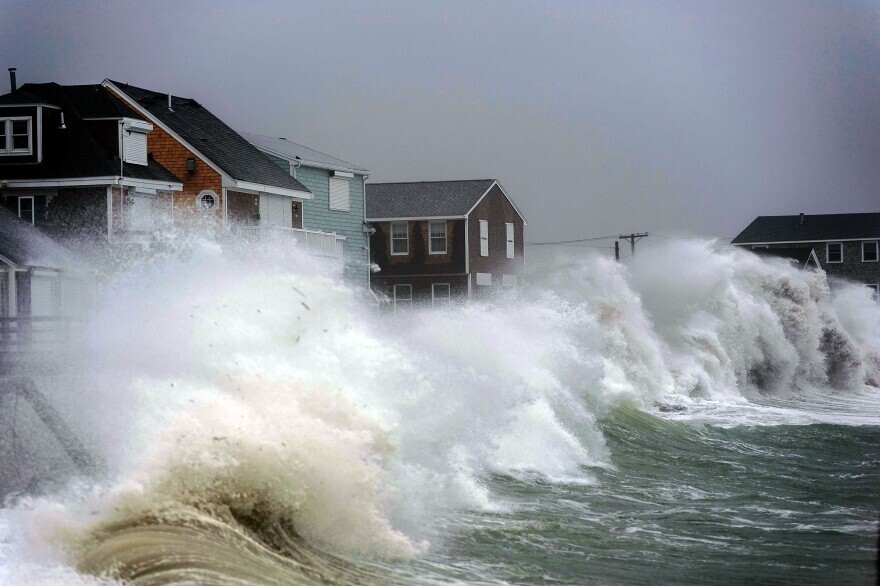Researchers look to prepare coastal New England for future storms

Coastal New England braced for the extreme high tide from a “bomb cyclone” storm that hit Scituate, Massachusetts, and other East Coast areas on March 2, 2018. (Ryan McBride/AFP Via Getty Images)
New research on the combined threat of rising sea levels and extreme weather focuses on coastal areas in New England.
By simulating hazards like flooding with computer models, the researchers say their findings could help prepare communities that are vulnerable to the impacts of climate change.
“We’re particularly interested in looking at close to the worst-case scenarios so the coastal communities, local decision-makers, managers can better prepare for future storms,” said Isaac Ginis, an oceanography professor at the University of Rhode Island who is leading the team of researchers from URI and Pennsylvania State University.
The four-year project is funded by a $1.5 million grant from the National Oceanic and Atmospheric Administration as part of its federal research on sea level rise. The study will focus on seven areas in Massachusetts, Rhode Island and Maine.
“In New England specifically, we’re concerned about sea level rise due to climate change,” Ginis said. And sea level rise could make intense storms even more dangerous.
As the climate changes, research shows, the region will experience more extreme weather events like nor’easters and strong storms such as Hurricane Sandy, which brought damaging winds and flooding to New England nine years ago.
During nor’easters, a storm surge occurs when wind drives water onto land. Ginis said it’s important to study the impacts of rising sea levels alongside these storms, so communities at risk of coastal flooding get a more accurate picture of what’s ahead. Some models only consider rising sea levels, not storms, he said.
In addition to storm surge, erosion and waves will factor into the computer models. Researchers plan to assess how the sites might be vulnerable to different hazards and figure out ways to mitigate damage.
For the full story, visit ctpublic.org.
